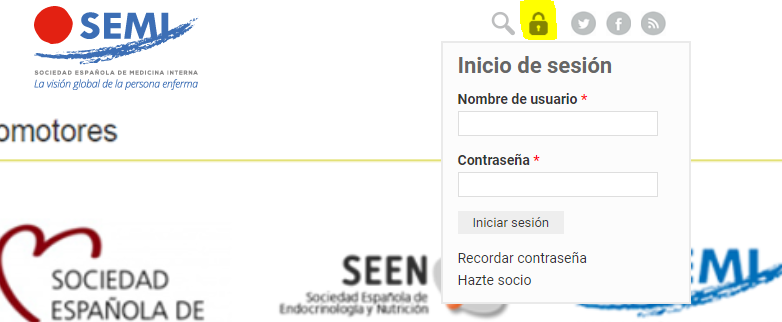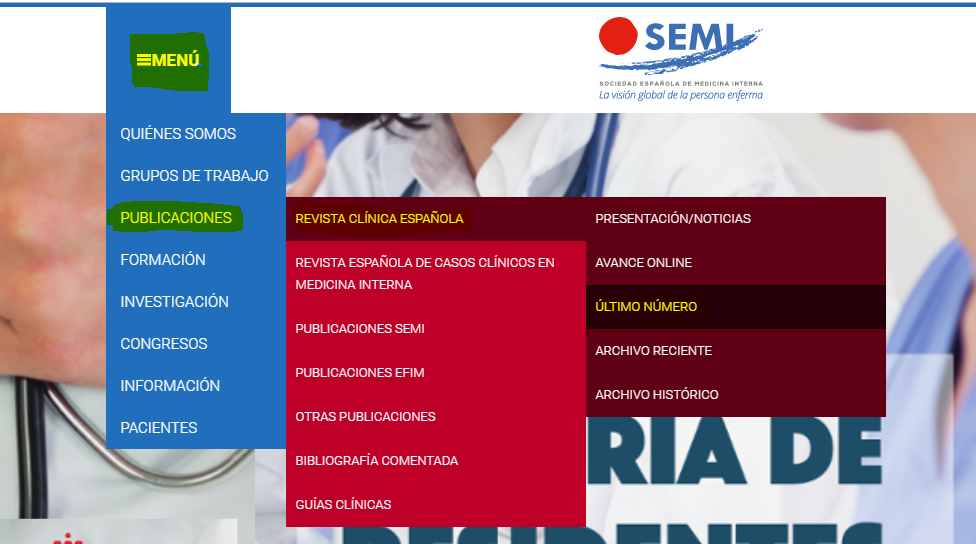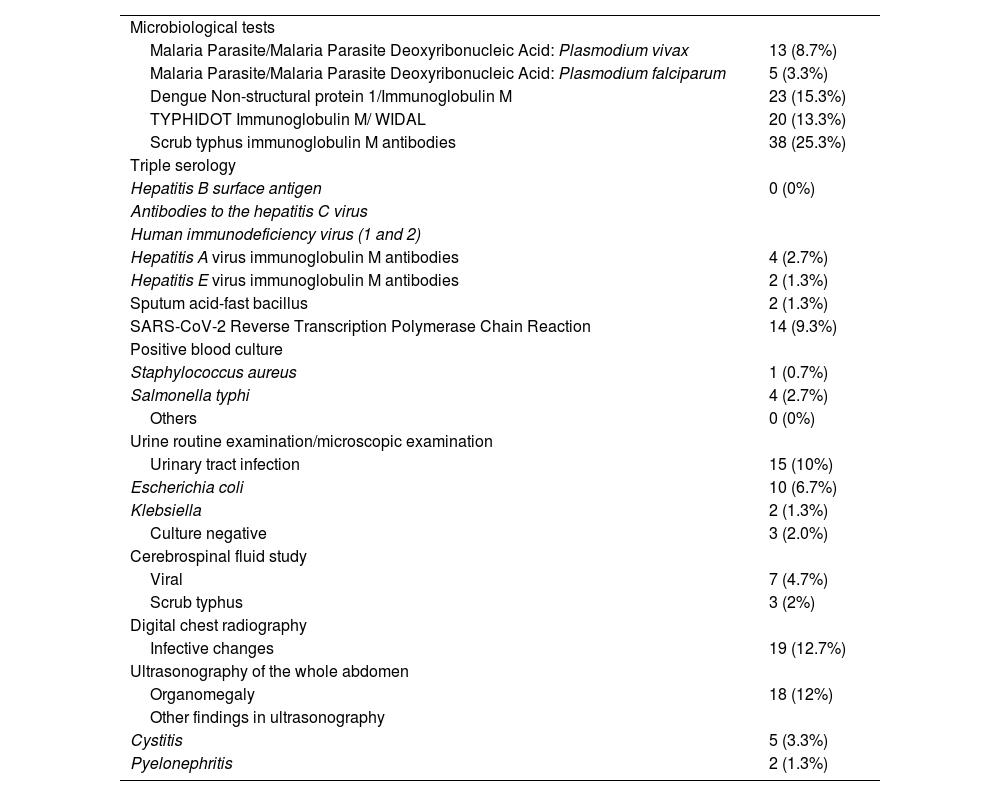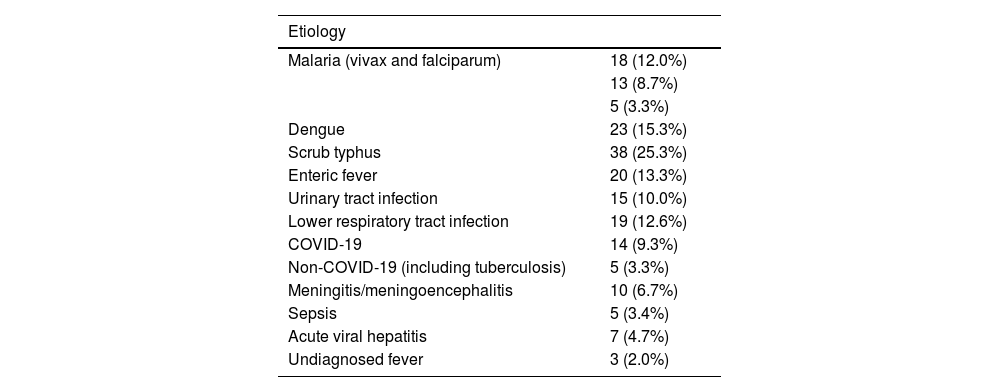The scarcity of epidemiological data on acute febrile illnesses from South Asia impairs evidence-based clinical decision-making. Our study aimed to explore the etiological spectrum of short-duration fever in patients admitted to a tertiary care hospital in West Bengal, India.
MethodsWe conducted a cross-sectional study from May 2021 to April 2022 involving 150 adult patients presenting with a fever lasting less than two weeks at Burdwan Medical College and Hospital (West Bengal, India). We performed comprehensive clinical assessments, including microbiological, serological, and other specific investigations, to identify the causes of the fever.
ResultsThe demographic profile predominantly included individuals aged 21–40 years, with a male-to-female ratio of 1.9:1; 60.7% of participants were from rural areas. The primary etiological agents identified were scrub typhus (25.3%), dengue (15.3%), and enteric fever (13.3%). Notably, 80% of patients presented with non-localizing symptoms, while 14.7% had respiratory symptoms. Blood cultures pinpointed Salmonella typhi and Staphylococcus aureus in a minority of cases (3.3%); malaria, primarily Plasmodium vivax, was diagnosed in 12% of the cases.
ConclusionOur findings highlight the complexity of diagnosing short-duration fevers, dominated by a wide range of etiological agents, with a notable prevalence of scrub typhus. These results underscore the urgent need for enhanced diagnostic facilities, including the availability of scrub typhus testing at primary healthcare centers. We recommend empirical doxycycline therapy for suspected cases and emphasize the need for further research to develop management guidelines for acute febrile illnesses. This study also highlights the importance of raising both community and clinician awareness to prevent irrational antibiotic use.
La escasez de datos epidemiológicos sobre enfermedades febriles agudas en el sur de Asia dificulta la toma de decisiones clínicas basadas en la evidencia. Nuestro estudio tuvo como objetivo explorar el espectro etiológico de la fiebre de corta duración en pacientes ingresados en un hospital de atención terciaria en Bengala Occidental, India.
MétodosRealizamos un estudio transversal desde mayo de 2021 hasta abril de 2022 que involucró a 150 pacientes adultos que presentaban fiebre de menos de dos semanas de duración ingresados en el Burdwan Medical College and Hospital (Bengala Occidental, India). Realizamos evaluaciones clínicas exhaustivas, incluidas investigaciones microbiológicas, serológicas y otras específicas, para identificar las causas de la fiebre.
ResultadosEl perfil demográfico incluyó predominantemente a individuos de 21 a 40 años, con una proporción de hombres a mujeres de 1,9:1; el 60,7% de los participantes provenían de áreas rurales. Los principales agentes etiológicos identificados fueron el tifus de la maleza (25,3%), el dengue (15,3%) y la fiebre entérica (13,3%). Cabe destacar que el 80% de los pacientes presentaron síntomas no localizados, mientras que el 14,7% tuvo síntomas respiratorios. Los hemocultivos identificaron Salmonella typhi y Staphylococcus aureus en una minoría de casos (3,3%); la malaria, principalmente Plasmodium vivax, se diagnosticó en el 12% de los casos.
ConclusiónNuestros hallazgos resaltan la complejidad del diagnóstico de fiebres de corta duración, dominadas por una amplia gama de agentes etiológicos, con una prevalencia notable del tifus de la maleza. Estos resultados subrayan la urgente necesidad de mejorar las instalaciones de diagnóstico, incluida la disponibilidad de pruebas para el tifus de la maleza en los centros de atención primaria. Recomendamos terapia empírica con doxiciclina para casos sospechosos y enfatizamos la necesidad de más investigaciones para desarrollar guías de manejo para enfermedades febriles agudas. Este estudio también destaca la importancia de aumentar la conciencia tanto en la comunidad como en los médicos para prevenir el uso irracional de antibióticos.
Article
Diríjase desde aquí a la web de la >>>FESEMI<<< e inicie sesión mediante el formulario que se encuentra en la barra superior, pulsando sobre el candado.

Una vez autentificado, en la misma web de FESEMI, en el menú superior, elija la opción deseada.

>>>FESEMI<<<









